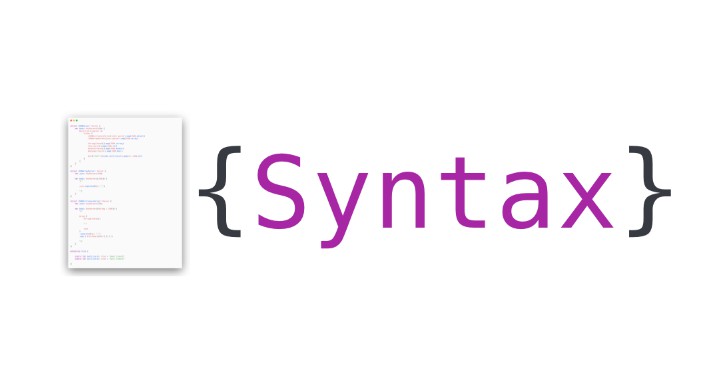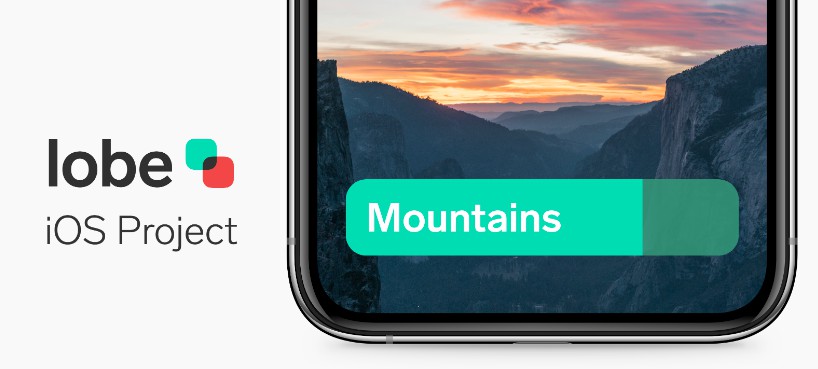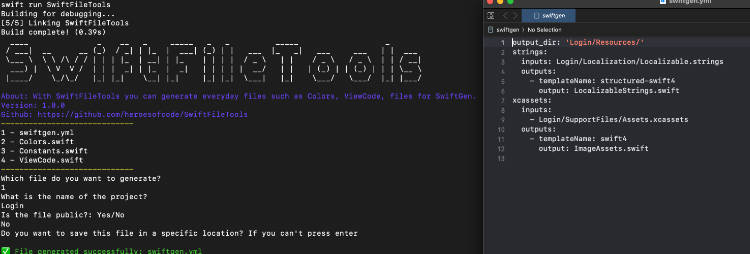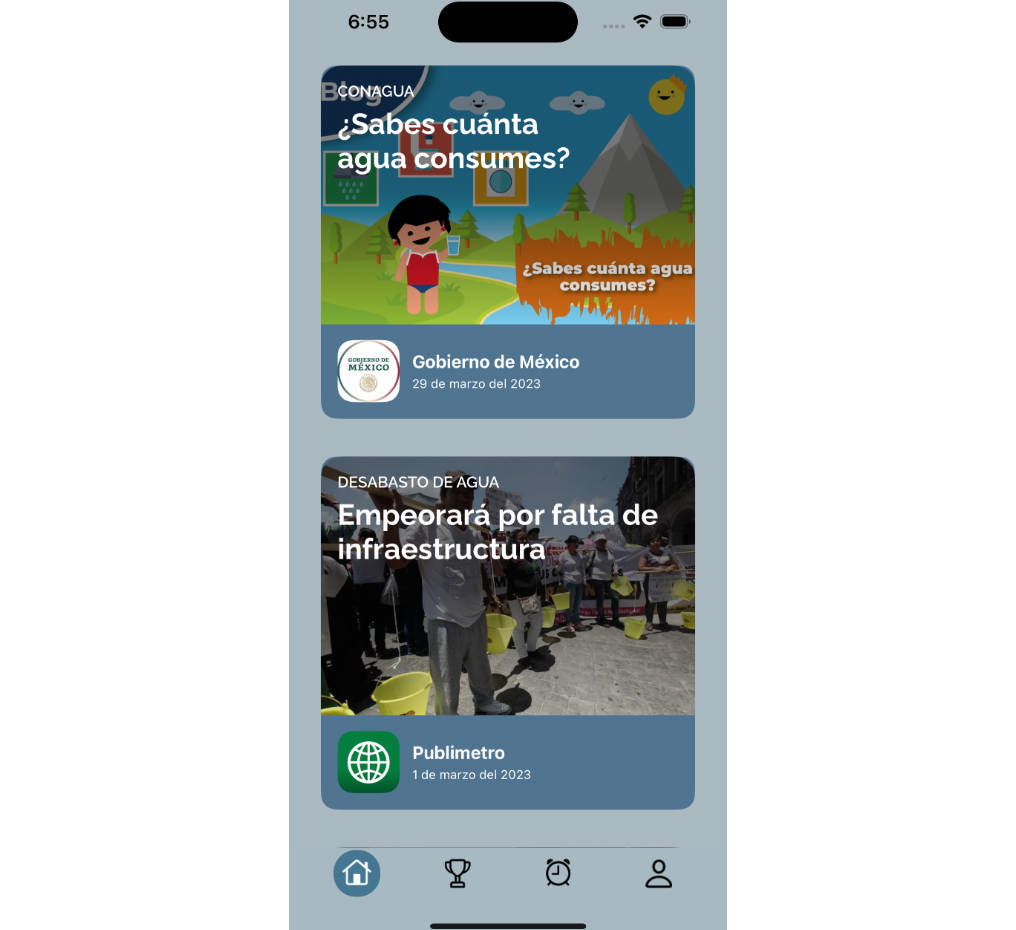Syntax
Say goodbye to Scanner's and Abstract Syntax Trees. Syntax will take text, and turn it into the model that you actually need.
Syntax is a SwiftUI-like data-driven parser builder DSL. You use composition and functional programming to implement a top-down LL(n) parser with minimal effort. The result is a Parser tailor made to fit your desired output model ;)
Installation
Swift Package Manager
You can install Syntax via Swift Package Manager by adding the following line to your Package.swift:
import PackageDescription
let package = Package(
[...]
dependencies: [
.package(url: "https://github.com/nerdsupremacist/Syntax.git", from: "1.0.0")
]
)
Usage
Syntax allows you to write parsers that perfectly fit the model that you want.
For example, let's say you want to parse the output of FizzBuzz.
With syntax you begin writing your model:
enum FizzBuzzValue {
case number(Int)
case fizz
case buzz
case fizzBuzz
}
And then you can just write a parser. Parser's in Syntax are structs that return a body much like in SwiftUI.
import Syntax
struct FizzBuzzParser: Parser {
var body: AnyParser<[FizzBuzzValue]> {
Repeat {
Either {
IntLiteral().map { FizzBuzzValue.number($0) }
Word("FizzBuzz").map(to: FizzBuzzValue.fizzBuzz)
Word("Fizz").map(to: FizzBuzzValue.fizz)
Word("Buzz").map(to: FizzBuzzValue.buzz)
}
}
}
}
Let's break that down:
Repeatsignals that it should parse multiple values.Eithersignals that you expect any of the following options.IntLiteralwill match the next integer literal it sees.Wordwill match the word you give it, and only if it exists by itself.mapwill map the value of a parser into something else.map(to:)will map the value to a constant, useful for matching things like keywords.
To use this parser you can call the parse function:
let text = "1 2 Fizz"
let values = try FizzBuzzParser().parse(text) // [.number(1), .number(2), .fizz]
Syntax Tree's
Syntax supports outputing an Abstract Syntax Tree. All nodes in the Syntax Tree are annotated with a kind. The kind will be automatically derived from the name of a parser, but you can also specify it yourself:
import Syntax
struct FizzBuzzParser: Parser {
var body: AnyParser<[FizzBuzzValue]> {
Repeat {
Either {
IntLiteral().map { FizzBuzzValue.number($0) }
Word("FizzBuzz").map(to: FizzBuzzValue.fizzBuzz).kind("keyword.fizzbuzz")
Word("Fizz").map(to: FizzBuzzValue.fizz).kind("keyword.fizz")
Word("Buzz").map(to: FizzBuzzValue.buzz).kind("keyword.buzz")
}
}
}
}
To get the AST you can ask for it via the syntaxTree function:
let text = "1 2 Fizz"
let tree = FizzBuzzParser().syntaxTree(text)
The AST is Encodable, so you can encode it into JSON. For example:
{
"startLocation": { "line": 0, "column": 0 },
"kind": "fizz.buzz",
"startOffset": 0,
"endLocation": { "line": 0, "column": 8 },
"endOffset": 8,
"children": [
{
"startLocation": { "line": 0, "column": 0 },
"kind": "int.literal",
"startOffset": 0,
"endLocation": { "line": 0, "column": 1 },
"endOffset": 1,
"value": 1
},
{
"startLocation": { "line": 0, "column": 2 },
"kind": "int.literal",
"startOffset": 2,
"endLocation": { "line": 0, "column": 3 },
"endOffset": 3,
"value": 2
},
{
"match": "Fizz",
"startLocation": { "line": 0, "column": 4 },
"kind": "keyword.fizz",
"startOffset": 4,
"endLocation": { "line": 0, "column": 8 },
"endOffset": 8
}
]
}
Syntax Highlighting
You can use your parser to highlight code on a Publish Site using this plugin.
import SyntaxHighlightPublishPlugin
extension Grammar {
// define Fizz Buzz Grammar
static let fizzBuzz = Grammar(name: "FizzBuzz") {
FizzBuzzParser()
}
}
try MyPublishSite().publish(using: [
...
// use plugin and include your Grammar
.installPlugin(.syntaxHighlighting(.fizzbuzz)),
])
More complex parsing
Alright. I hear you. FizzBuzz isn't exactly a challenge. So let's take it up a notch and parse JSON instead.
To be able to parse JSON, we have to understand what JSON even is. JSON consists of
a) the primitive values like strings, numbers, booleans
and b) any combinations of objects (dictionaries) and arrays.
So a possible model for JSON would be:
enum JSON {
case object([String : JSON])
case array([JSON])
case int(Int)
case double(Double)
case bool(Bool)
case string(String)
case null
}
Syntax comes with constructs for most of these out of the box, like: StringLiteral and IntLiteral.
So we can rely on those. We can put most of our cases in an Either which will try to parse whichever case works:
struct JSONParser: Parser {
var body: AnyParser<JSON> {
Either {
/// TODO: Arrays and Objects
StringLiteral().map(JSON.string)
IntLiteral().map(JSON.int)
DoubleLiteral().map(JSON.double)
BooleanLiteral().map(JSON.bool)
Word("null").map(to: JSON.null)
}
}
}
You will notice that we put a map at the end of each line.
This is because parsers like StringLiteral will return a String and not JSON. So we need to map that string to JSON.
So the rest of our job will go into parsing objects and literals. The first thing we notice though is that Arrays and Objects need to parse JSON again.
This recursion needs to be stated explicitely. For that we can wrap our Either in a Recursive that will give us a reference to the JSON Parser:
struct JSONParser: Parser {
var body: AnyParser<JSON> {
Recursive { jsonParser in
Either {
/// TODO: Arrays and Objects
StringLiteral().map(JSON.string)
IntLiteral().map(JSON.int)
DoubleLiteral().map(JSON.double)
BooleanLiteral().map(JSON.bool)
Word("null").kind(.nullLiteral).map(to: JSON.null)
}
}
}
}
We can start with arrays. We can create an array parser that will parse multiple values of JSON separated by commas, inside [ and ]. In Syntax that looks like this:
struct JSONArrayParser: Parser {
// reference to the JSON parser
let jsonParser: AnyParser<JSON>
var body: AnyParser<[JSON]> {
"["
jsonParser.separated(by: ",")
"]"
}
}
Easy right. It's pretty much what we said in words. Dictionary is pretty similar, except that we have a key-value pairs separated by commas:
struct JSONDictionaryParser: Parser {
let jsonParser: AnyParser<JSON>
var body: AnyParser<[String : JSON]> {
"{"
// Group acts kinda like parenthesis here.
// It groups the key-value pair into one parser
Group {
StringLiteral()
":"
jsonParser
}
.separated(by: ",")
.map { values in
// put the pairs in a dictionary
return Dictionary(values) { $1 }
}
"}"
}
}
And for the final act, we add those two to our Either for JSON:
struct JSONParser: Parser {
var body: AnyParser<JSON> {
Recursive { jsonParser in
Either {
JSONDictionaryParser(jsonParser: jsonParser).map(JSON.object)
JSONArrayParser(jsonParser: jsonParser).map(JSON.array)
StringLiteral().map(JSON.string)
IntLiteral().map(JSON.int)
DoubleLiteral().map(JSON.double)
BooleanLiteral().map(JSON.bool)
Word("null").kind(.nullLiteral).map(to: JSON.null)
}
}
}
}
let text = "[42, 1337]"
let json = try JSONParser().parse(text) // .array([.int(42), .int(1337)])





